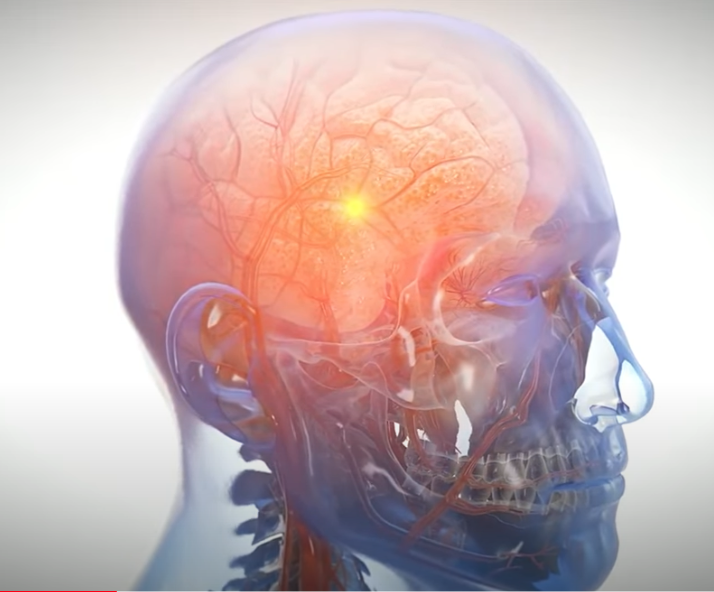According to the Federal Motor Carrier Safety Administration (FMCSA), truck crashes kill and injure thousands of Americans each year, many of them in California. Truck accidents happen because of a wide variety of factors, some preventable, some not. But whenever and wherever they occur, these accidents have the potential to destroy property and inflict catastrophic injuries on motorists and the general public.
Semi-Truck-Involved Motor Vehicle Collisions
A collision between a semi-truck and a passenger car or truck tends to inflict massive damage and injuries on the occupants of the smaller vehicle, while leaving the driver of the semi-truck relatively unscathed. While there are, of course, exceptions to that rule, generally the size and weight difference between a fully-loaded semi-truck (weighing up to 80,000 pounds) and a typical passenger vehicle (weighing about 4,000 pounds) means the passenger vehicle often takes the worst of any collision.
Not only does the large size difference cause significant injuries, it is often the cause of the accident itself. As outlined further below, the ability of smaller cars to be dragged underneath a semi-truck, blind spots, and a truck’s inability to slow down can prove catastrophic on the road.
Underride Accidents
An underride accident occurs when a smaller vehicle becomes wedged or trapped beneath a semi-truck’s trailer. There are two primary ways they happen:
- The smaller vehicle rear-ends the semi-truck, but its hood rides underneath the trailer’s rear gate. The point of impact between the gate and the passenger vehicle occurs at or around the vehicle’s windshield. These collisions can shear off a passenger vehicle’s roof or crush its passenger compartment.
- The semi-truck essentially runs over the smaller vehicle when the vehicle becomes trapped beneath the side of the semi-truck trailer. This can happen when a semi-truck changes lanes with a car in its blind spot (see below), or when a truck makes a turn (especially a right-hand turn) from an outside lane without realizing a passenger vehicle is in the inside lane.
In either scenario, this accident poses extreme dangers to the occupants of the smaller vehicle. Truckers and trucking companies can take steps to minimize the risk of these accidents by installing guards on semi-truck trailers to block smaller vehicles from riding underneath them. Unfortunately, however, not all trucking companies take this preventative step.
Blind-Spot Accidents
Semi-trucks have large and deep blind spots, sometimes referred to as no zones, or areas surrounding a semi-truck where a passenger vehicle should never venture. Semi-truck drivers cannot see vehicles in their blind spots without the aid of mirrors or onboard cameras, and even those assistive devices are not foolproof. On a typical semi-truck, blind spot no zones extend to the following areas:
- 20 feet in front of the semi-truck’s cab;
- 30 feet behind the semi-truck’s trailer;
- One lane wide stretching from just behind the semi-truck cab to mid-trailer; and
- Two lanes wide spanning the length of the semi-truck on the passenger side.
Catastrophic accidents happen when semi-truck drivers change lanes or turn into the path of a passenger vehicle hiding in their semi-truck’s blind spot. The best way for passenger car drivers to avoid these types of accidents is to remember that if you can’t see a truck driver in his mirrors, then he can’t see you. However, it is not enough for you to be able to see a semi-truck’s mirrors. You are in a semi-truck’s blind spot if you cannot see the truck driver himself in those mirrors.
Unable to Stop
Semi-trucks driving at highway speeds have a significantly greater stopping distance than ordinary passenger vehicles. In heavy traffic conditions, semi-trucks run a high risk of not being able to stop in time to avoid a rear-end collision with a car or smaller truck. Semi-truck drivers have an obligation to regulate their speed to account for their large stopping distance, particularly in difficult weather conditions that make it even more difficult to stop. Unfortunately, not all semi-truck drivers follow safe driving practices, putting others on the road at risk of a dangerous collision.
Single Vehicle Semi-Truck Accidents
Not all semi-truck accidents involve (or at least, begin with) the semi-truck colliding with another vehicle. In many cases, the first semi-truck accident event involves only the semi-truck itself. Of course, these single vehicle semi-truck accidents can still cause massive damage to motorists and others on and near the road. After the initial semi-truck incident, secondary accidents frequently occur that sweep up multiple other vehicles and bystanders, and can cause widespread damage resulting in serious, even fatal, injuries.
Jackknife Accidents
In a jackknife accident, a semi-truck completely loses control. A jackknife happens when the tractor part of a semi-truck folds like a pocketknife blade backward against the semi-truck trailer. These accidents often happen when the semi-truck with a heavy load of cargo attempts to stop quickly. The force of the trailer against the back of the semi-truck cab pushes the cab from behind, and swings it back around the trailer hitch connecting the cab and trailer.
A semi-truck driver has no control once his rig has jackknifed. The truck continues in its general direction of travel but sideways, sweeping up other vehicles like a plow, rolling over onto its side, and/or spilling its cargo. In the best case, the semi-truck only causes significant property damage and ties up traffic for a few hours while crews work to clean up the mess. However, a jackknife easily leads to serious and fatal injuries for the trucker and other motorists unfortunate enough to share the road with the semi-truck at the time of the accident.
Rollover Accidents
The typical semi-truck has a high center of gravity and a relatively narrow wheelbase. This makes semi-trucks prone to rolling over at any time, and especially when their cargo has not been loaded and secured properly. Rollovers happen most often when a semi-truck enters a sharp curve (such as a highway on-ramp) at unsafe speeds, when the semi-truck’s trailer tips (such as in high wind or when one set of the trailer’s wheels run onto a low road shoulder), when the semi-truck leaves the road and rolls down an embankment, when the semi-truck jackknifes, or when the semi-truck driver over-steers when trying to avoid a road hazard.
However a semi-truck rollover happens, it can have catastrophic effects. A semi-truck can roll over onto other vehicles, crushing them and fatally injuring their occupants. It can cause follow-on accidents as motorists try to avoid the rolled-over semi-truck. It can result in cargo spilling and causing hazards on the roadway (see below). And, of course, it can injure or kill the semi-truck driver.
Defective or Worn-Out Equipment
Semi-trucks take a beating from constant use. They require regular, thorough maintenance to operate safely on California roads. Virtually any defective or poorly-maintained equipment on a semi-truck can contribute to an accident. A semi-truck with bad brakes can go out of control downhill, colliding with other vehicles, or leaving the roadway.
A semi-truck with worn-out tires can experience a blowout that causes the semi-truck driver to lose control, not to mention that blowouts litter the road with so-called road gators that represent hazards to motorists in their own right. A semi-truck towing cargo secured by defective tie-downs or latches can lose control or spill cargo.
Semi-truck owners, maintenance staff, and manufacturers all have an obligation to the public to prevent defective or worn-out semi-truck equipment from causing injuries and fatalities.
Cargo-Related Semi-Truck Accidents
The purpose of a semi-truck is to carry bulk and/or bulky cargo. Sometimes, that cargo escapes a semi-truck trailer or spills on the road, creating hazards to motorists and the general public.
Explosions and Toxic Events
Semi-truck tractors sometimes pull tank trailers filled with flammable or toxic materials. Drivers towing these loads must have special licenses and training to ensure public safety, and the tanks themselves must undergo stringent maintenance. Unfortunately, violent semi-truck accidents, particularly rollovers, sometimes rupture these tanks, resulting in an explosion or leak of toxic material into the surrounding environment.
Cargo Spills Causing Physical Hazards and Obstructions
Of course, semi-truck cargo does not have to be combustible or toxic to put other motorists at risk. Any object that falls from the back or side of a semi-truck, particularly one traveling at highway speeds, creates a potentially-catastrophic road hazard. Large items of cargo in the roadway can cause severe primary and secondary collisions. Smaller items can lead motorists to lose control.
An Attorney Can Help After a Semi-Truck Accident

The wide variety of semi-truck accidents that can happen on California roads share a common trait: they frequently lead to catastrophic injuries and senseless fatalities for innocent motorists. Victims of these accidents usually need help to sort through the complex and confusing web of facts and legal rules that determine whether they can recover compensation for their injuries.
If you have questions about your legal rights to compensation after an accident involving a semi-truck, contact an experienced Southern California truck accident lawyer today. The Attorneys at Gomez Trial Attorneys are experienced litigators in catastrophic accidents, and can assist you and your family through this difficult time.
Gomez Trial Attorneys
655 West Broadway
Ste1700
San Diego, CA 92101
[619]-237-3490







